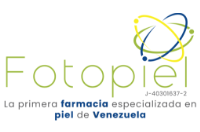EL HANSENIANO: UN SER HUMANO
Palabras clave:
HANSEN, LepraResumen
Este trabajo consiste en un estudio retrospectivo sobre el rechazo
social que ha vivenciado el enfermo de Lepra a través de los siglos.
Lo hemos dividido en dos partes. En la primera de ellas, indagamos
sobre los orígenes geográficos de la Lepra, donde su historia se
confunde con mitologías y creencias propias de los pueblos, incluso en
los aspectos terapéuticos de la misma. También sobre la diseminación
de la enfermedad al resto del mundo, aunada a los grandes
desplazamientos de la Humanidad (expansión del Imperio Romano, la
Guerra de las Cruzadas, Descubrimiento de América). Se observa al
mismo tiempo, la aparición de sitios de aislamiento y reclusión del
leproso (Gaferías, Leprocomios, Malaterias y Casas de Lázaro) de
donde comienza a emerger una etapa literaria producto de los efectos
del rechazo sobre el área psico-afectiva del enfermo.
La segunda parte de esta exposición, se dedica al estudio de la
producción literaria mundial relacionada con la Lepra, y en particular la
obra literaria nacional, dándose a conocer al poeta de Manicuare: Cruz
Salmerón Acosta.
El objetivo central de este trabajo, es estimular en el médico el
enfoque HUMANISTA de su paciente, previo al enfoque científico de
su enfermedad. Ojalá este esfuerzo no sea estéril.
ABSTRACT
This paper is a retrospective study of the social rejection of leprosy patients
throughout the centuries.
In have divided it in two parts. In the first, the geographic origins of leprosy,
where its history is confused with the myths and beliefs of the populations
where it appeared, including therapeutical aspects. Also, regarding the
dissemination of the disease in the rest of the world, together with great
human displacements (expansion of the Roman Empire, the Cruzades,
discovery of America). Simultaneously, isolation aras for leprosy patients were
created (Leprosy hospitais, sanitariums and Lazaro houses) from where a
literary stage emerges, produced by the impact of rejection on the psychoaffective
area of patient.
The second part is dedicated to the study of worldwide leprosyrelated literary
production, with special emphasis on Venezuela, where we introduce the poet
Cruz Salmerón Acosta. The main objetive of this work is to stimulate
physicians intB adopting a HUMANIST approach towards their patients,
before analyzing the scientific aspects of their disease. We hope this effort will
not be sterile.
Descargas
Número
Sección
Licencia
Publicado por la Sociedad Venezolana de Dermatología Médica, Quirúrgica y Estética







